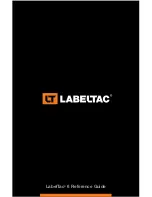
Remove the machine from the packaging and place it on a stable and horizontal surface, suitable to support
its weight, near a suitable socket. Keep the packaging and all its parts for possible future transport.
INSTALLATION
Remove the steel cover (ref. H) to access the water tank.
WE RECOMMEND THE USE OF A WATER
SOFTENER FILTER OR ANTI-SCALE BAG
that must be periodically replaced. If this is not done, scale
deposits may form inside the machine, these can prejudice the correct operation of the machine, apart
from the validity of the warranty. After having inserted the water softener filter inside the tank, fill the latter
with drinking water, possibly with low calcium content. The tank can be filled using a funnel and a bottle.
For all these operations remove only the round cap on the left (the one with the loading pipes) of the
tank. The round cap on the right (the one with only one pipe inserted) must not be touched.
The machine is equipped with a water level sensor in the tank. If the water inside the tank reaches a too
low level, the possible ongoing pouring is interrupted and the water running out light (ref. N) turns on,
signal that it is necessary to fill the tank as explained above.
FILLING OF THE TANK
CONNECTION TO THE ELECTRIC NETWORK
The power voltage of the machine is not modifiable by the user. Before
connecting it to the electric network, check that the voltage of the network
corresponds to the power supply voltage of the machine indicated on the
identification plate.
The coffee pouring spout, present in both groups, serves to increase or decrease the flow of coffee. If the
coffee grinding inside the capsule is fine, turn the spout CLOCKWISE but not excessively since it could
be unscrewed from its seat. Instead, if the grinding is coarser, turn the spout COUNTER CLOCKWISE: this
way the flow of the coffee will decrease. These adjustments can be carried out exclusively with machine
stopped, that is, not during the pouring of the liquid.
COFFEE POURING SPOUT (ref. L)
During pouring do not touch the spout and do not approach your face to the
hot parts of the machine (burns hazard). The heating surfaces of the machine
are subject to residue heat even after use!
14






































